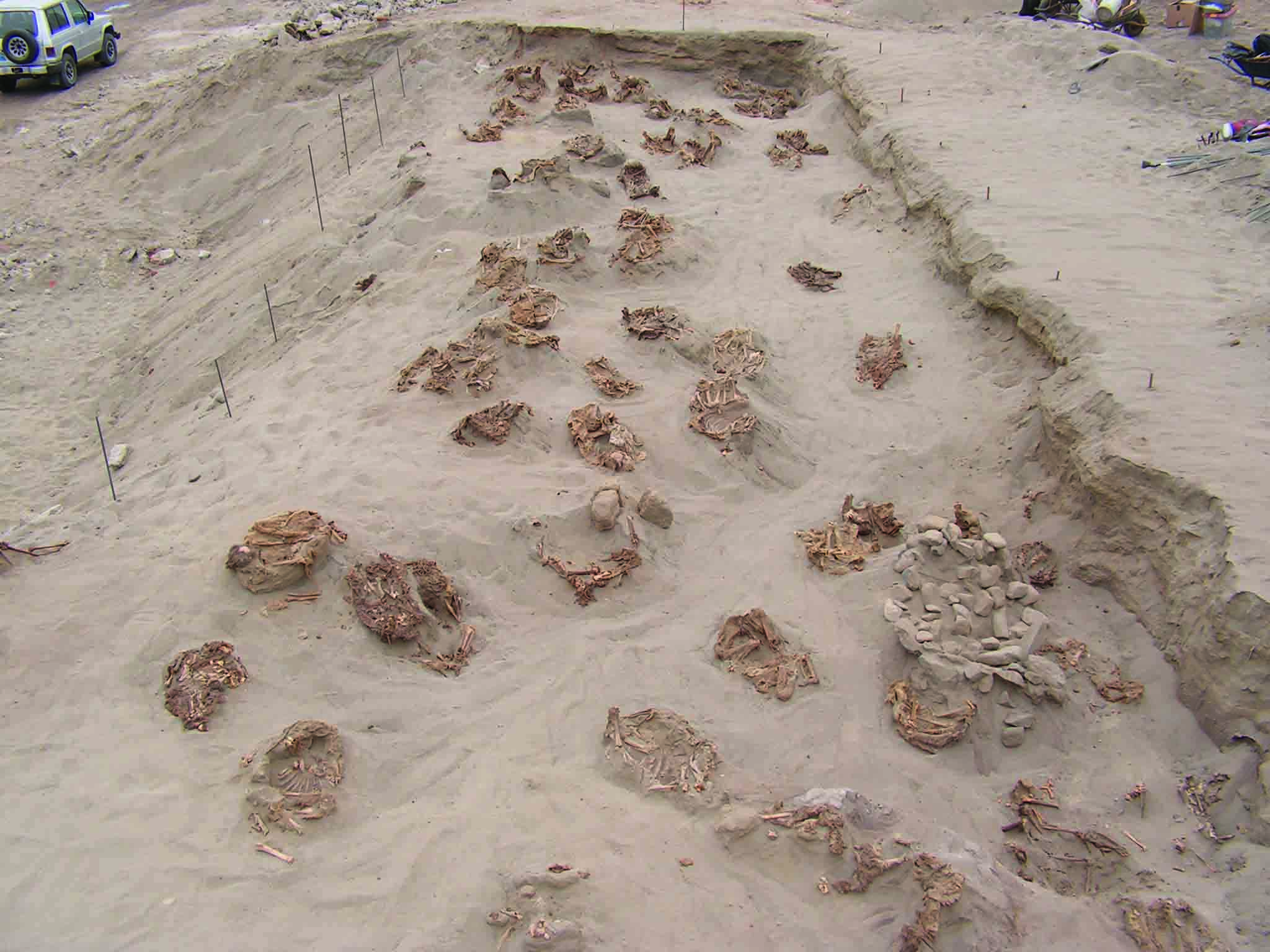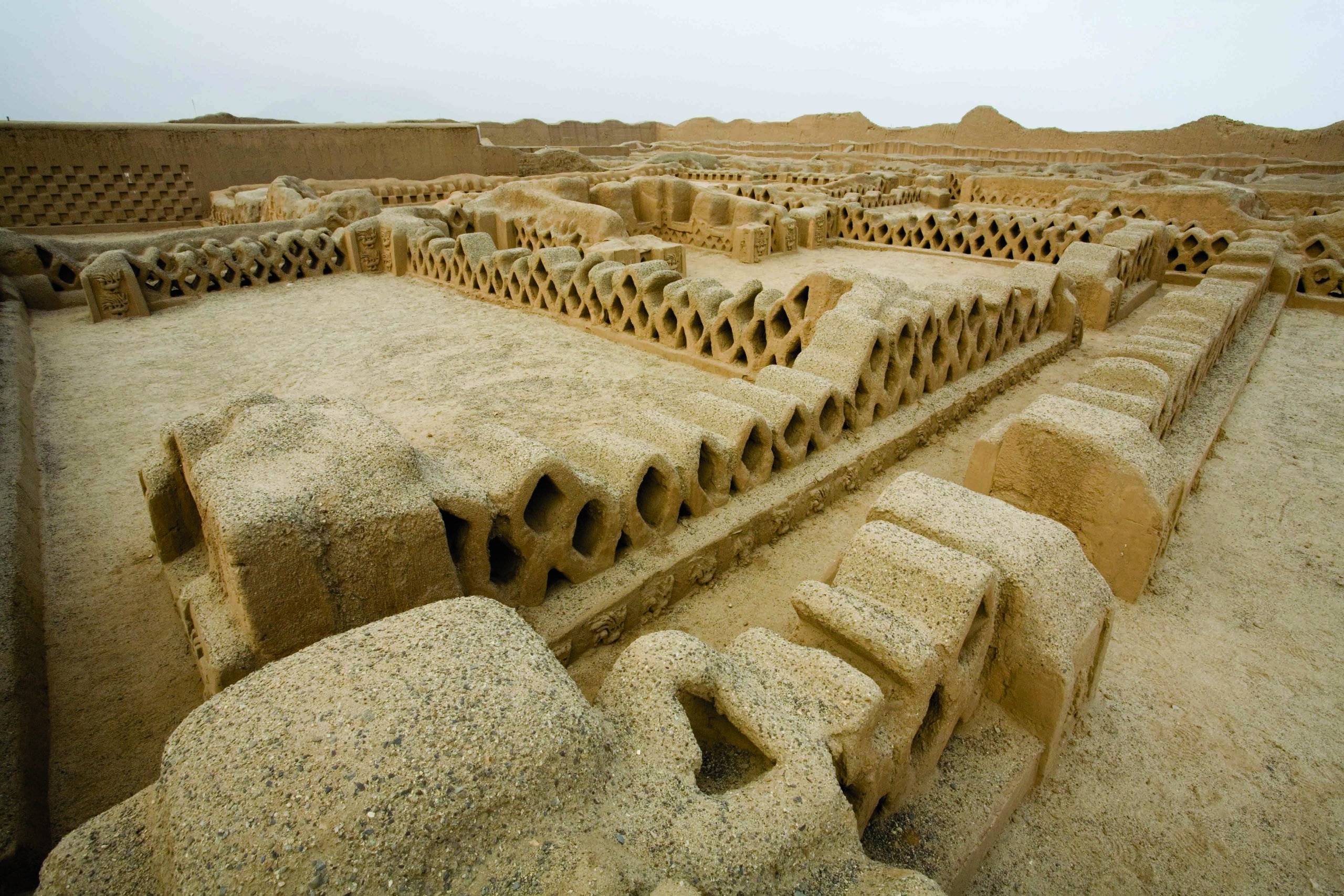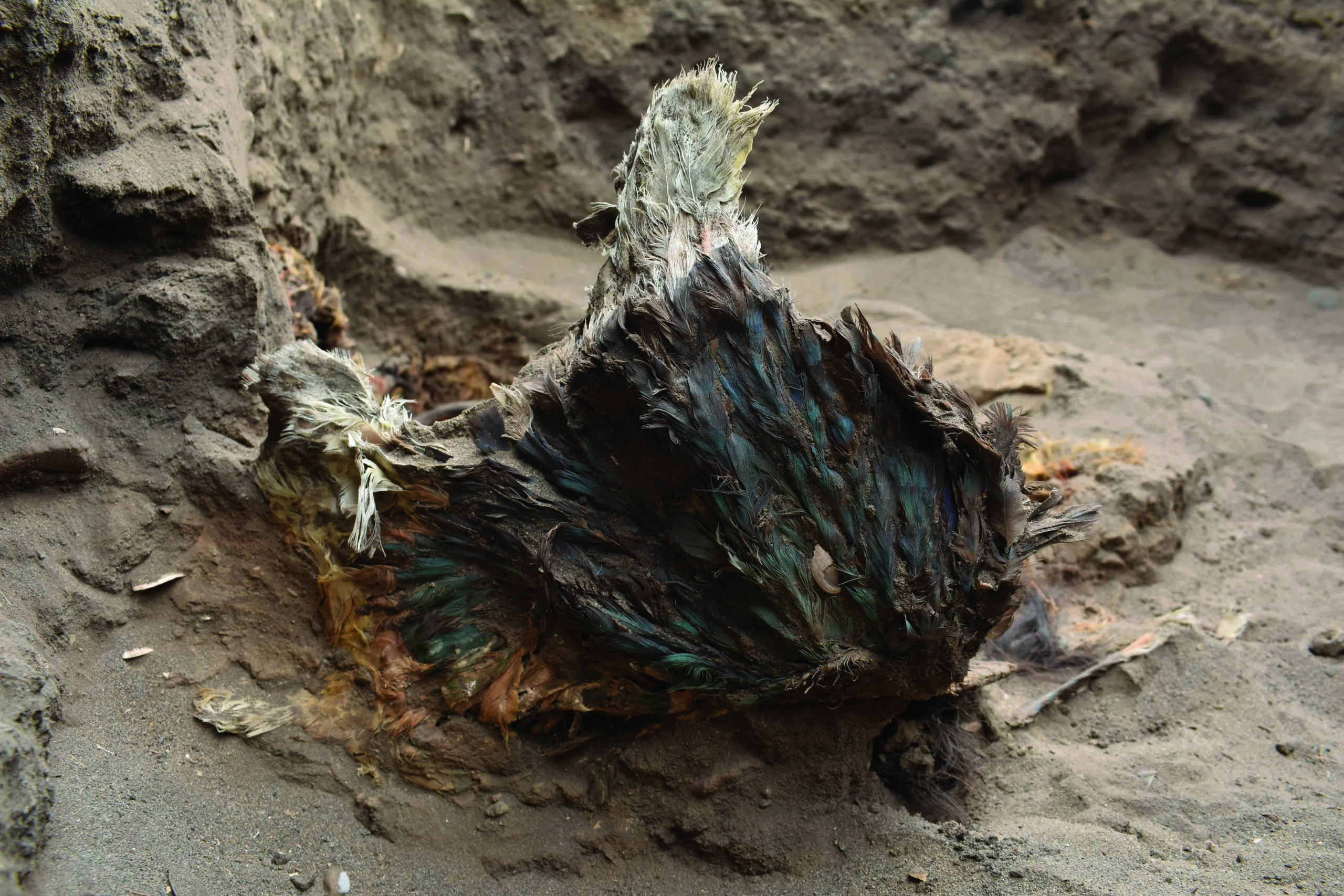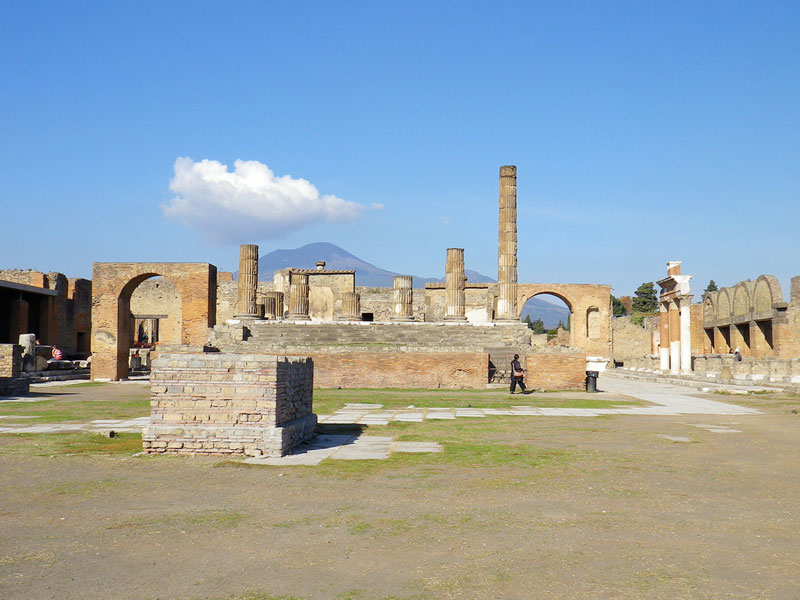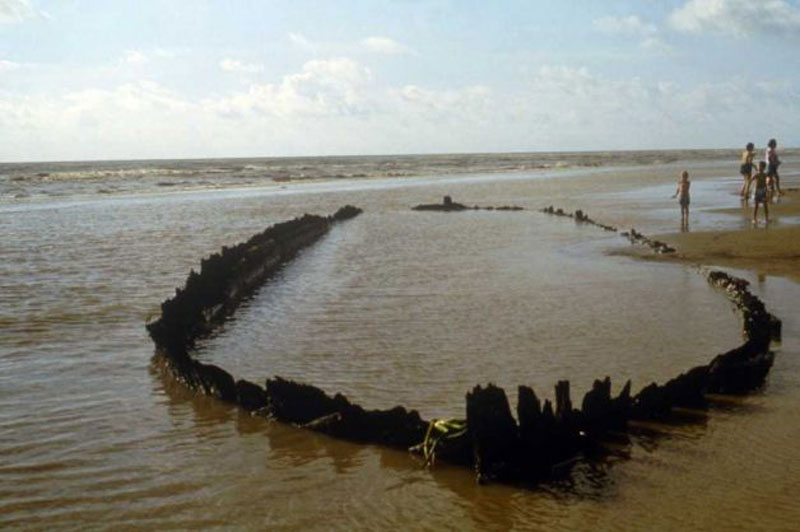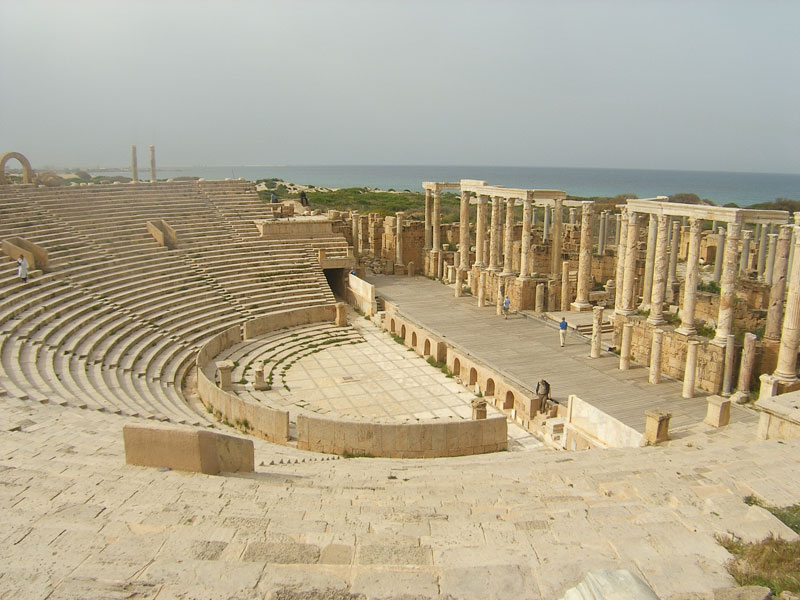
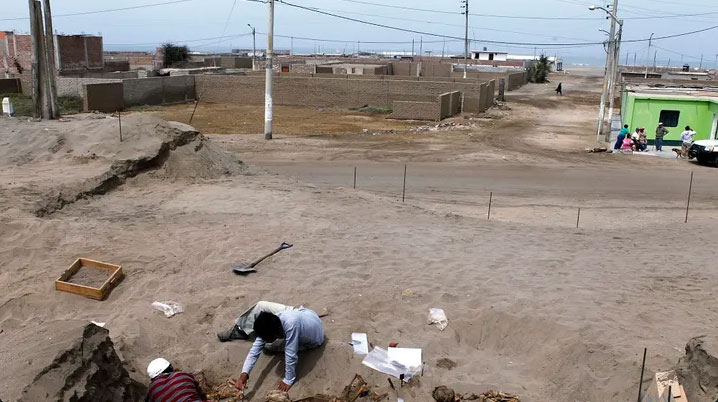
Each year the technology used by archaeologists to locate sites becomes more sophisticated. Satellite images, Google Earth, and ground-penetrating radar are now combined with more traditional methods such as surface surveys and test trenches to determine how and where archaeologists will excavate. But sometimes one of the best sources of information about an area—and one that is frequently overlooked—is the knowledge of the local people who live there and whose families have been there for generations. Such is the case with a site in the small Peruvian coastal town of Huanchaquito that has come to be referred to by the locals as Las Llamas—The Llamas. It is a site that has a great deal to tell about the Andean Chimú culture and their religious and sacrificial practices.
Archaeologist Oscar Gabriel Prieto grew up in the town of Huanchaco, next to Huanchaquito. There, from the time that he was six years old, he would walk around sites in the area. He recently returned to excavate Pampas Gramalote, a small fishing village dating to between 2000 and 1200 B.C. While working there one day in August 2011, Prieto was approached by a resident of Huanchaquito who asked him if he was an archaeologist. When Prieto answered yes, the man said, “Then you have to come with me. Only 300 yards from here, there is another area filled with human bones, including skulls. I know these things are important.”
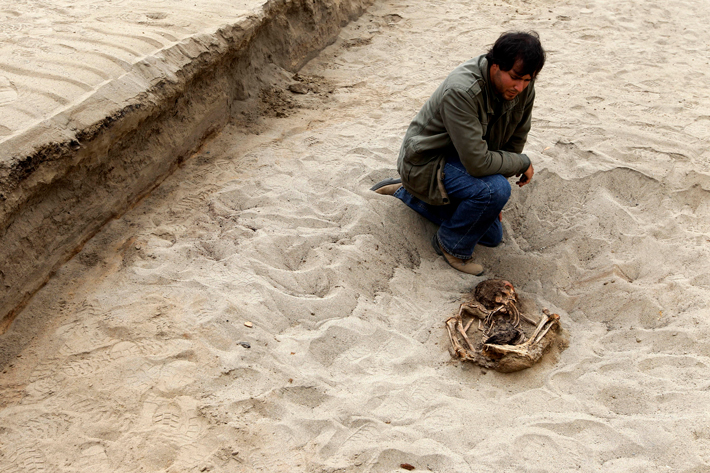
Together they walked to the site and there Prieto saw a number of scattered human skulls and animal bones. No one, save the village’s inhabitants, had ever seen or even known about the site before. Strong Peruvian winter winds had blown away the surface sands and exposed the remains.
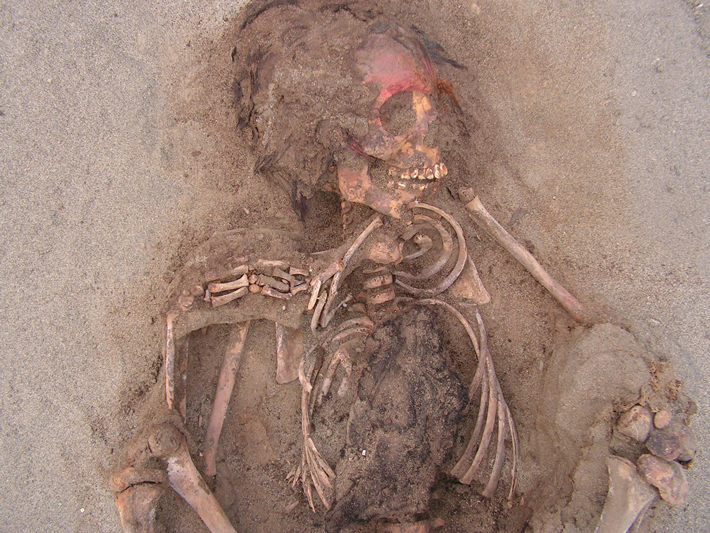
After calling the local archaeological officials and enlisting the services of several of his students from Pampas Gramalote, Prieto quickly got to work. In less than five hours, the team had exposed 20 human bodies and the extremely well-preserved remains of 30 camelids, the family that includes llamas and alpacas. “Right away I realized the magnitude of the discovery,” says Prieto. Shortly thereafter, he was able to add to his team a professional illustrator, a zooarchaeologist, and a physical anthropologist, as well as gather the necessary tools—wheelbarrows, cardboard boxes, shovels, a bit of funding from the town, and a tent to cover the site. Over the next two weeks, under the watchful eyes of the inhabitants of Huanchaquito, Prieto excavated a total of 43 human and 76 llama skeletons. He had uncovered the largest human and animal sacrifice ever found in Peru.
The find immediately attracted national and international television, newspaper, and Web coverage, which, in turn, attracted looters who came to the site disguised as tourists. To protect both Prieto’s team and the excavation, the mayor of Huanchaco sent the police and local guards to watch over the site day and night. “Peru in August is really cold, windy, and foggy,” Prieto says. “I’m really grateful to them.”
To preserve the remains and protect them from the looters, Prieto moved the skeletons to the Chan Chan Museum, where the team began to study them immediately. Thus far, they have analyzed the bones of 15 children between six and eight, and 12 and 15, years old, each of whom had been killed with a strong slash across the sternum. Their broken ribcages suggest that their chests had been opened and their hearts removed.
Rather than being repelled by the violent manner of the children’s and animals’ deaths, Prieto believes that it is an archaeologist’s job to figure out why things like this happened in the past and what it meant in terms of the political, social, and economic situation at the time. “There is no doubt in my mind,” says Prieto, “that these children, and the llamas as well, were sacrificed as part of a ritual offering dating to approximately A.D. 1200 to 1400, when the Chimú kingdom dominated this part of the coast of northern Peru.”
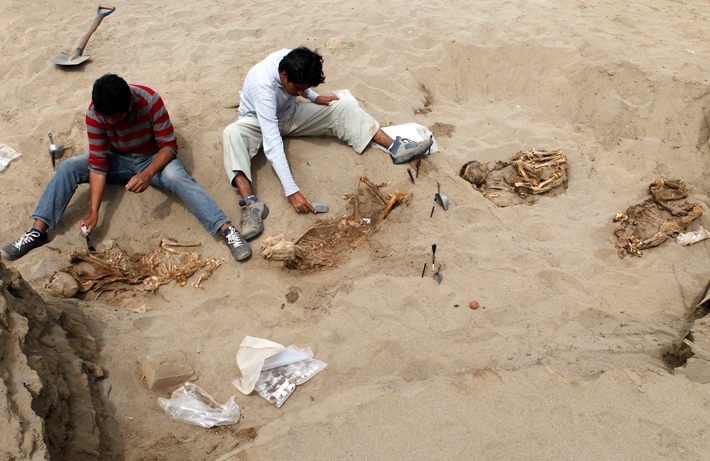
At the height of their culture, the Chimú had a sophisticated state that controlled a territory of about 550 square miles between what is now the border of Peru and Ecuador in the north and the Supe Valley on the north-central coast of Peru. The Chimú were well known for their skill in constructing extensive agricultural fields irrigated by complex hydraulic systems, as well as for being masters of metalwork and textile and ceramic manufacture. The capital of the ancient Chimú kingdom was the city of Chan Chan, which was likely the largest city in pre-Hispanic South America and once covered some seven square miles. Chan Chan was located only one-half mile from Huanchaquito.
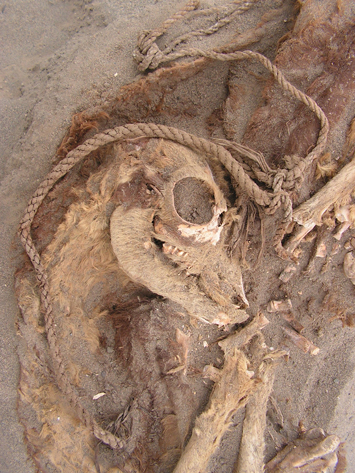
Although the finds at Las Llamas are more extensive than those at any other Andean sacrifice ever identified, this type of ritual event is not unique in the heart of Chimú civilization, according to Prieto. In 1968, as part of a large survey project that first studied the area, archaeologist Christopher Donnan uncovered evidence of a similar event next to the colonial-era church of Huanchaco. There he found 17 children and 20 llamas and concluded that they had been deliberately sacrificed and buried together as part of a Chimú religious ritual. According to Prieto, both children and animals had been part of ritual offerings since the very beginnings of complex societies in the Central Andes. Although at Las Llamas Prieto has found only camelids, at many other sites archaeologists have found remains of parrots, sea birds, monkeys, guinea pigs, and dogs. However, the scale of the Las Llamas find suggests to Prieto that the sacrifice was done for some extraordinary purpose.
“This was a very costly ritual,” says Prieto, “and one for which the future of the society was quite literally sacrificed. Both the children and the llamas, who were also young and were an important source of food, wool, and transportation across the Chimú’s large territory, represent the wealth of this society. They are the most precious gifts that can be given to nature and the elements in return for the gift of life.” Prieto believes that the sacrifice was part of a ritual offering made to the ocean during a climatic crisis that negatively affected the Chimú and their economy. “I think they were trying to satisfy the ocean during a powerful rain event by offering the best of their civilization.” Heavy rains are highly unusual on the Peruvian coast, and when they do occur, it is considered an El Niño phenomenon. This cyclical rise in the temperature of the ocean’s surface water might have caused prolonged rains that could have damaged the fishing and agriculture on which the Chimú depended for their way of life. Prieto found a thick layer of sediment that makes it clear that heavy rain fell right before the sacrifice, as well as during the ritual. Both Donnan and Prieto believe that the other sacrificial site, originally discovered in 1968, is related to the same event.
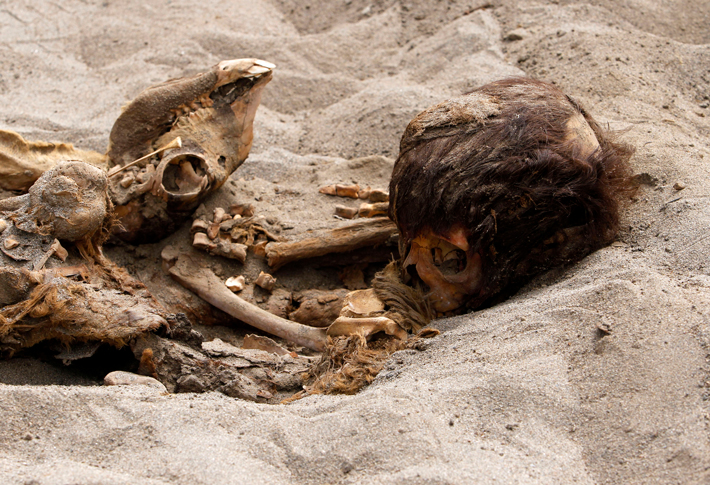
Prieto is in the process of creating a digital site map of the orientation, disposition, and distribution of the children and llamas in order to understand how the sacrifice was organized. For example, some children were buried together with llamas, some with the llamas on top, and some with the llamas underneath. In other cases, the llamas were buried separately. Prieto has established that the burials were organized along east-west and north-south axes, although the significance of these patterns is not yet clear. In the future, the team will undertake analyses of the childrens’ bones and teeth to determine their gender, what kind of diet they had access to, if they belonged to the same genetic group or even the same family, and if they were local or came here from another region. Prieto would also like to know if the llamas were raised locally, or brought in from another area, and if the camelids are exclusively llamas, or if some might be alpacas. There is little evidence for the presence of alpacas on the Peruvian north coast, and alpacas were considered more valuable than llamas. Specialized tests of the children’s hair will determine whether they were poisoned before they were sacrificed and what type of poison may have been used.
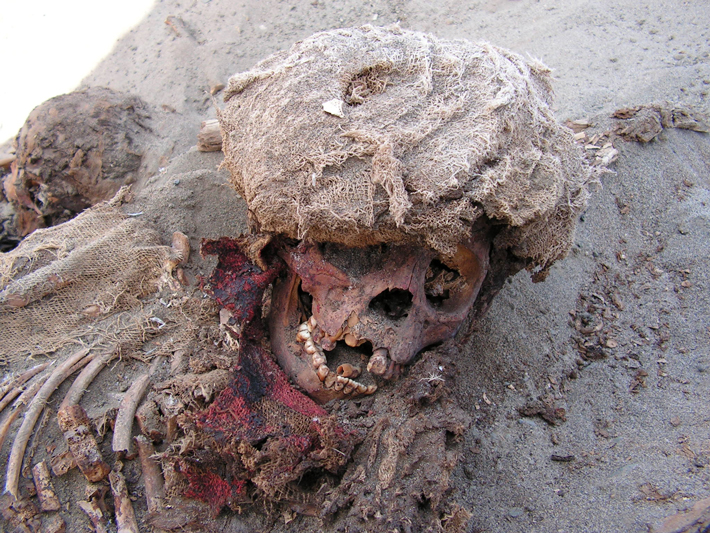
In summer 2012 Prieto’s team will return to Las Llamas to look for more children’s and llamas’ remains. In the meantime, the site is constantly monitored by local guards and the police. And Prieto and his team are always walking around the area to keep it safe from looters and other dangers.
In so many ways it was fortuitous that Prieto, a local himself, was the archaeologist who was led to the site. “I am always fascinated,” he says, “by how ancient people reacted to specific situations and how they tried to explain the cosmos. The Chimú, whose very existence was threatened by forces of nature beyond their control, chose to sacrifice the most valuable things they had."


